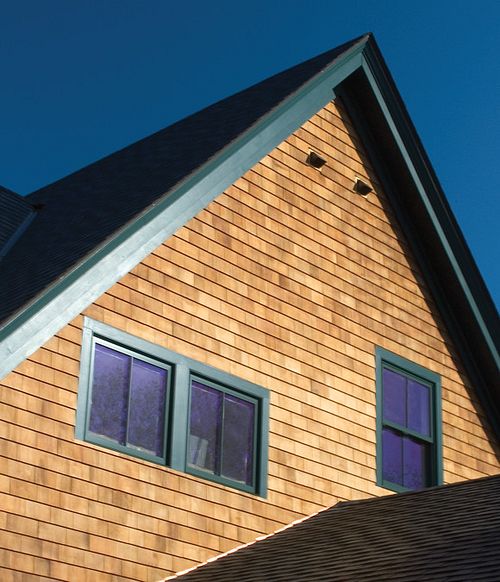
Best Wood for Framing: Comparing the Top Choices
September 3, 2025
Pressure Treated Wood Fencing: Long-Lasting Protection
September 30, 2025By: Blog Writer Published: September 17, 2025 Category: Roofing & Siding
Introduction
Cedar shakes and shingles have been trusted for generations thanks to their natural durability, weather resistance, and timeless beauty. Among the options available, Western Red Cedar (WRC) and Alaskan Yellow Cedar (AYC) stand out as the premier choices. Both species offer exceptional performance, but they differ in appearance, strength, and long-term value. Understanding these differences will help you select the best fit for your project.
Appearance and Curb Appeal
-
Western Red Cedar Shakes & Shingles
Known for their warm reddish-brown tones, Western Red Cedar provides rich color variation and a traditional look. As it weathers, WRC develops a silver-gray patina that gives roofs a rustic, natural character. -
Alaskan Yellow Cedar Shakes & Shingles
Alaskan Yellow Cedar ranges from pale yellow to light golden hues, offering a cleaner, brighter appearance. Over time, AYC also weathers to a silver-gray, but it often does so more evenly than WRC, maintaining a consistent look across the entire roof.
Takeaway: WRC delivers warmth and variety, while AYC offers brightness and uniformity.

Durability and Longevity
-
Western Red Cedar
Lightweight yet stable, Western Red Cedar has natural resistance to decay and insects. It performs well in most climates but benefits from regular maintenance in areas with heavy rainfall or humidity. -
Alaskan Yellow Cedar
Denser and harder than WRC, Alaskan Yellow Cedar is renowned for its exceptional wear resistance. Historically used in boatbuilding, it’s a proven choice for demanding environments where strength and durability matter most.
Takeaway: Both species last for decades, but AYC’s density gives it an edge in harsher climates.
Weathering and Maintenance
-
Western Red Cedar:
Tends to weather into varied shades of gray, adding rustic charm. Requires periodic cleaning and finishing to maintain its original red tones. -
Alaskan Yellow Cedar:
Weathers to a more consistent silvery gray, which many homeowners find appealing. It is also less prone to surface checking and splitting, making it slightly lower maintenance over time.
Takeaway: Choose WRC if you want character as it ages; choose AYC if you prefer a more even, uniform weathered look.

Cost and Availability
-
Western Red Cedar:
More widely available across North America, which generally makes it the more cost-effective choice for large projects. -
Alaskan Yellow Cedar:
Harvested primarily in Alaska and British Columbia, AYC is less common and often priced higher due to its limited supply and premium qualities.
Takeaway: WRC is accessible and budget-friendly, while AYC offers premium performance at a higher investment.
Best Applications
-
Western Red Cedar Shakes & Shingles:
Ideal for homeowners and builders seeking traditional beauty, lighter weight, and wide availability. -
Alaskan Yellow Cedar Shakes & Shingles:
Perfect for projects in demanding climates, high-end designs, or where long-term durability is the top priority.

Conclusion
Both Western Red Cedar and Alaskan Yellow Cedar deliver exceptional results when used for shakes and shingles. Western Red Cedar offers warmth, character, and affordability, while Alaskan Yellow Cedar provides superior density, consistency, and longevity. At Capital Forest Products, we proudly supply both options, ensuring you have the right cedar to match your design vision, climate needs, and budget.
